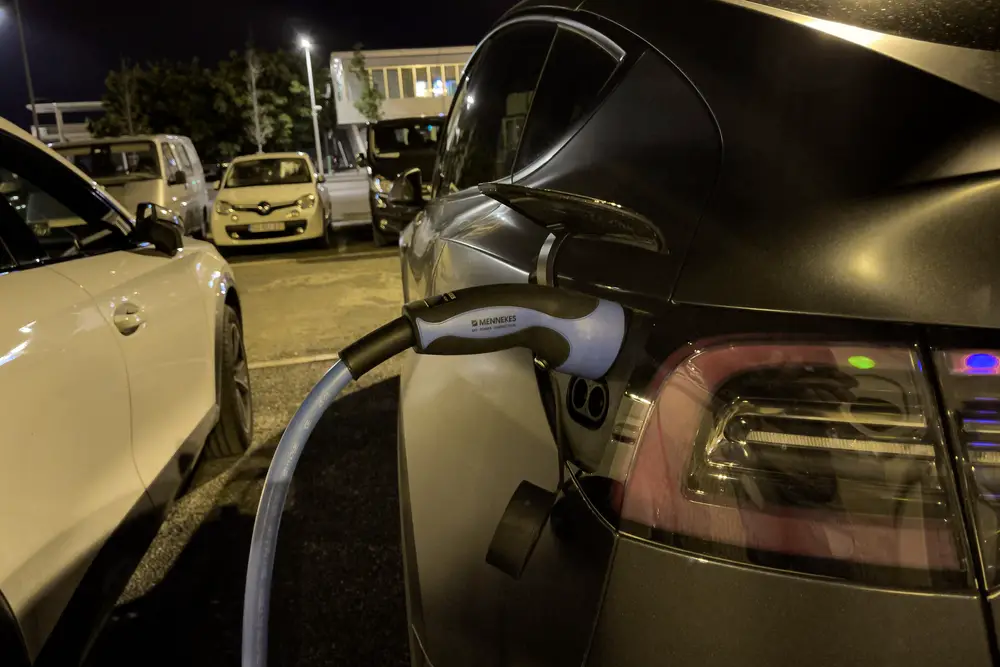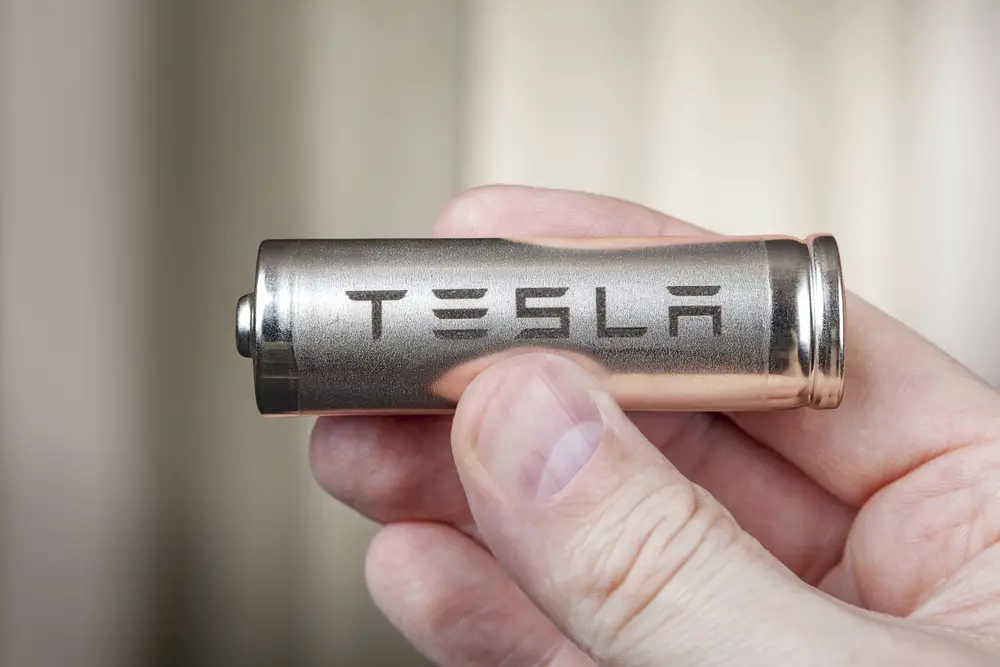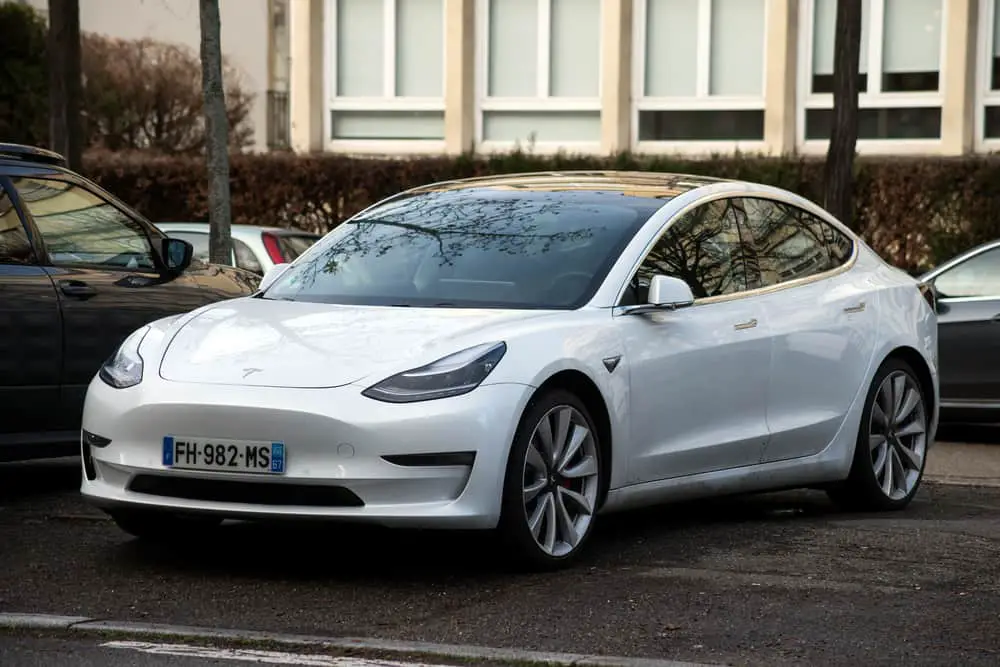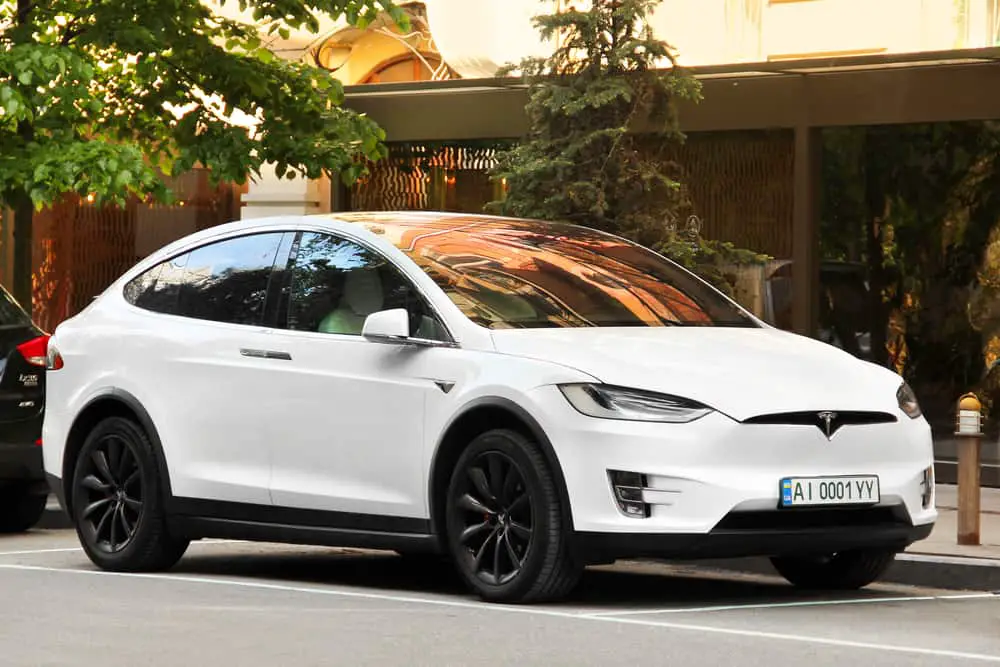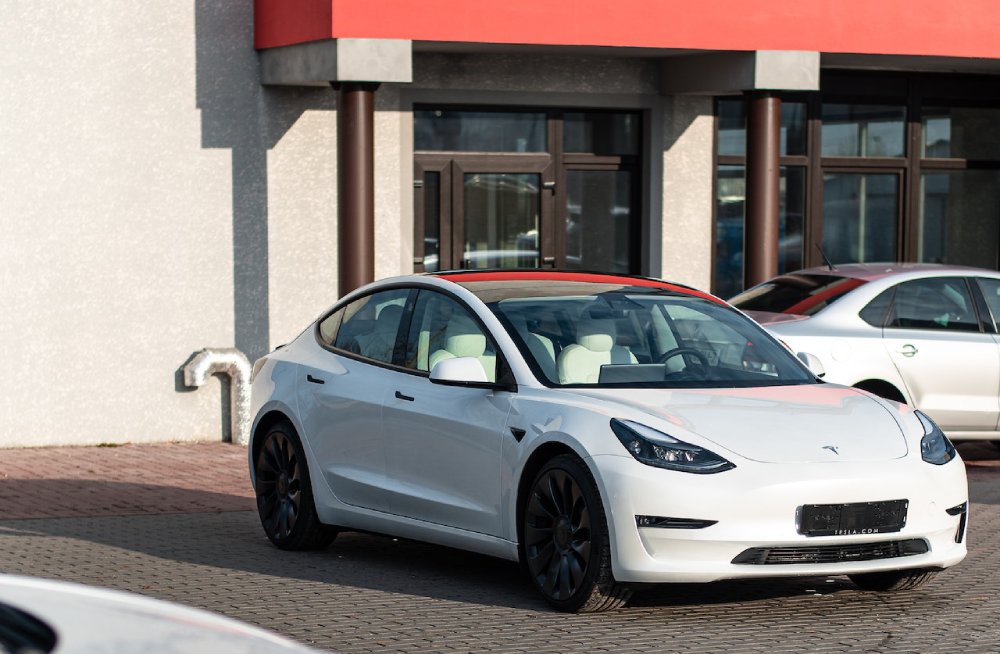Ever pull into your driveway after a long day, plug in your Tesla, and wonder, “Can I leave this charging overnight without any issues?”
If you’re like many Tesla owners (or potential owners), the question is not just about convenience but also about maximizing the longevity and performance of your high-tech investment.
The world of electric vehicles (EVs) is evolving rapidly, but the basics of battery care remain a constant concern.
Charging a Tesla is not like charging your smartphone; there are variables like battery temperature, charging speed, and the electrical grid to consider.
Quick Answer:
Yes, you can leave a Tesla plugged in overnight. Tesla’s onboard charging management system prevents overcharging by stopping the charge once the battery is full. This ensures the battery remains at optimal levels, making it safe and convenient for overnight charging.
We’ll explore the technical aspects of Tesla’s battery technology, the company’s official guidelines, and what experts have to say about overnight charging.
Understanding Tesla’s Battery
Tesla vehicles are powered by lithium-ion batteries, which are known for their high energy density, long lifespan, and lightweight construction. In this section, we will discuss the composition and general functioning of Tesla’s battery.
Lithium-Ion Battery
Tesla’s batteries consist of individual cells containing a combination of lithium ions, nickel, and graphite.
The basic principle behind these batteries is the movement of lithium ions between the positive and negative electrodes during charging and discharging processes.
The primary components of a lithium-ion cell include:
- Cathode (positive electrode): usually made of lithium cobalt oxide, lithium manganese oxide, or lithium iron phosphate
- Anode (negative electrode): typically made of graphite
- Electrolyte: a lithium salt in an organic solvent, enabling the flow of lithium ions
- Separator: a thin sheet keeping the cathode and anode apart, preventing short-circuiting
Tesla has engineered its batteries to optimize performance, durability, and efficiency, making them a popular choice for electric vehicles. A vital aspect of any battery is its capacity, which determines the amount of energy it can store.
Tesla has different battery capacities available, depending on the model and specific requirements of the vehicle.
As a Tesla owner, you may be curious about the implications of leaving your vehicle plugged in overnight. It’s important to understand that modern electric vehicles like Tesla are designed with sophisticated battery management systems that protect the battery from overcharging and other potential problems.
This means that you can confidently leave your Tesla plugged in overnight without worrying about battery degradation or safety issues. The car’s software will manage the charging process and ensure optimal battery health.
How Charging Works
Range and Charging
When you charge your Tesla, you’re essentially replenishing the energy stored in the battery pack, which in turn provides power for the electric motor. The range of your Tesla depends on the battery’s state of charge.
Many factors, such as driving habits and temperature, can affect the range. It’s essential to find the right balance between the available range and your daily driving needs.
You can charge your Tesla at home using the standard Tesla Wall Charger or at one of the public Superchargers.
The Tesla chargers are designed to protect your battery from overcharging and keep it within the recommended state of charge limits.
Charge Cycles
A charge cycle refers to the process of charging your Tesla’s battery from a low state of charge to a higher one. Ideally, you should maintain your battery’s state of charge within a specific range, typically between 20% and 80%.
Consistently charging your Tesla to a full charge might reduce the battery’s overall lifespan.
Therefore, it’s crucial to manage your charge cycles carefully, which can be done using the charging settings in your Tesla. You can set a charging limit to keep the charge below a full charge, ensuring your battery doesn’t experience overcharging.
Overnight Charging
Overnight charging is a convenient way to ensure that your Tesla is charged and ready for the day ahead. You can easily plug your Tesla into the Wall Charger at home, allowing it to recharge while you sleep.
When charging overnight, it’s essential not to exceed the recommended state of charge limit.
You can set a custom limit within the car’s settings so that your Tesla doesn’t fully charge during the overnight process, preventing any potential harm to the battery.
The Role of Tesla’s Battery Management System
Tesla’s Battery Management System (BMS) plays a crucial role in maintaining the health and performance of your vehicle’s battery.
When you leave your Tesla plugged in overnight, the BMS works to monitor and control various aspects of the battery, including its temperature, voltage, and current.
The BMS ensures that your battery maintains a safe and optimal charging level, preventing overcharging and potential damage.
As your Tesla charges, the BMS closely keeps track of the battery level and adjusts the charging rate accordingly. This helps prolong the lifespan of your battery and allows you to maximize its performance.
While your Tesla is plugged in overnight, the BMS also works to maintain the temperature of the battery. This is especially important during extreme temperatures, as it can help prevent damage to the battery.
By constantly monitoring the battery’s temperature and adjusting it as needed, the BMS ensures that your Tesla’s battery remains in optimal condition.
In addition to managing the battery level and temperature, the BMS also oversees the overall health of your vehicle’s battery.
It runs diagnostics to identify any potential issues or concerns, allowing you to address them as soon as possible. This proactive management protects your battery from potential long-term damage.
Battery Degradation and Longevity
Causes for Battery Degradation
Battery degradation is a natural process that occurs over time, regardless of the type of battery. For Tesla vehicles, the primary causes of battery degradation include excessive heat, overcharging, and leaving the car plugged in for extended periods. It’s important to understand these factors to optimize your battery’s longevity.
The heat generated during charging or when using your vehicle can accelerate the process of battery degradation. Charging your Tesla at a faster rate, especially in high temperatures, can increase the risk of degradation.
Another cause of degradation is overcharging, which occurs when the battery is charged above its capacity, leading to a decrease in battery performance over time.
Optimizing Battery Longevity
To maintain the longevity of your Tesla battery, there are steps you can take to minimize degradation.
By following these practices, you’ll be better equipped to keep your battery healthy for a longer period.
- Monitor battery temperature: Be aware of the ambient temperature while charging or driving your Tesla. Ideally, keep your car in a cool, dry environment to preserve battery life.
- Charge at a moderate rate: Although charging at a slower rate might be less convenient, it can help reduce battery degradation. Fast charging, while time-efficient, can contribute to higher temperatures and degradation.
- Avoid overcharging: Ensure your battery doesn’t stay at 100% for extended periods. Tesla vehicles have built-in safeguards to prevent overcharging, but you should avoid leaving your car plugged in overnight.
Impacts of Temperature on Battery’s Performance
When it comes to your Tesla’s battery, temperature plays a crucial role. Extreme temperatures, particularly high temperatures, can negatively impact the battery’s performance and overall lifespan.
In hot weather conditions, the battery may experience increased degradation. High temperatures can cause a process called thermal runaway, which can lead to a loss of capacity.
To avoid this issue, Tesla’s battery management system actively cools the battery to maintain an optimal temperature range.
- Optimal temperature range: 20°C to 30°C (68°F to 86°F)
- High temperature: Above 40°C (104°F)
It’s essential to consider ambient temperature and exposure to the sun when parking your Tesla. On hot days, try to park in a shaded area or use a sunshade. Moreover, using the climate control system in your vehicle can help regulate temperatures and protect the battery.
If you decide to leave your Tesla plugged in overnight, note that the battery management system will continue to maintain the optimal temperature as needed.
However, it’s crucial to keep in mind that constant exposure to high temperatures could still lead to increased wear and tear on the battery over time.
Tesla’s Unique Features for Battery Maintenance
Tesla has designed its electric vehicles with advanced features to help maintain the health of your car’s battery.
Leaving your Tesla plugged in overnight can allow these systems to work effectively, ensuring your vehicle will be ready for your morning commute.
One vital feature is the Tesla app. This app not only makes it convenient for you to monitor your car’s charging status remotely, but it also allows you to schedule your charging sessions.
This way, your vehicle charges during off-peak hours, which can be beneficial for both your wallet and the battery’s lifespan.
Cabin Overheat Protection is another valuable feature Tesla offers. When enabled, this system prevents your vehicle’s interior from reaching dangerously high temperatures during hot summer days, especially when parked under direct sunlight.
By doing so, it helps protect your battery and cabin components from excessive heat, which plays a significant role in preserving its overall health.
Tesla’s Sentry Mode is an innovative security measure designed to keep your car safe during overnight charging. This feature uses the car’s cameras and sensors to monitor its surroundings actively. In case of any suspicious activity detected, it will alert you through the Tesla app.
However, it’s essential to note that Sentry Mode does consume additional battery power. Therefore, it’s advisable to keep your Tesla plugged in while using this mode to ensure that your car maintains an adequate charge level.
Plugging In Tesla Overnight: Pros and Cons
Pros
- Convenience: You can simply plug in your Tesla when you arrive home and let it charge overnight. This means you won’t have to spend time during your day finding a charging station or waiting for the charge to complete.
- Lower electricity rates: Many utility companies offer lower electricity rates during off-peak hours, such as overnight. By charging your Tesla at this time, you can save money on your energy bill.
- Peace of mind: By plugging in your Tesla before going to bed, you can be confident that it will be fully charged and ready for your morning commute. No need to worry about finding a charging station during your busy day.
Cons
- Risk of overcharging: While Tesla has a built-in charging management system that prevents overcharging, there is still a slight risk of damaging the battery if you constantly leave your vehicle plugged in overnight. However, this risk is minimal, and Tesla’s systems are designed to handle overnight charging.
- Limited charging speed: Charging overnight usually means you’ll be using a Level 2 charging station or your home charger, which may offer slower charging speeds compared to public Level 3 fast-charging stations. This may not be a concern if your Tesla can fully charge within the overnight time frame.
- Potential for forgetting to unplug: If you’re in a rush in the morning or simply forgetful, there’s a chance you might forget to unplug your Tesla before driving away. While Tesla has built-in safety features to prevent damage, it can still be an inconvenience.
Precautions for Long Term Storage
When you’re planning to leave your Tesla plugged in overnight or for an extended period, such as during a vacation, it’s essential to consider some precautions for the long-term storage of the vehicle’s battery.
Proper care and attention to these precautions help ensure the longevity and performance of the Tesla batteries.
First and foremost, it’s crucial to keep the battery charged within the recommended levels. Tesla recommends maintaining a charge level between 50% and 80% during long-term storage.
This ideal range ensures that your battery maintains a balanced charge without depleting too much or overcharging.
It’s also a good practice to enable Tesla’s Energy Saving Mode or Scheduled Departure feature while you’re away. These settings help reduce the power drain on your Tesla batteries and can automatically manage your charging schedule based on your desired departure time.
If your Tesla is equipped with a Battery Heater, avoid leaving it enabled during extended periods of inactivity. While it may seem counterintuitive, constant heating can contribute to the degradation of your battery.
In addition, protect your vehicle from extreme temperature fluctuations. Where possible, park the Tesla in a garage, a shaded area, or under a cover to maintain a stable temperature for the batteries.
Sudden temperature changes can lead to thermal stress, affecting the battery life.
Lastly, make regular checks on your Tesla if leaving it parked for an extended period. Monitoring the vehicle’s status and adjusting any settings if necessary can help in avoiding unforeseen issues.
Tips for Frequent and Occasional Drivers
When it comes to Tesla vehicles, it’s important to consider your charging habits and plan accordingly.
Whether you drive frequently or occasionally, understanding the best practices for charging can help you maintain the health of your electric vehicle’s battery, be prepared for long trips, and minimize harmful effects on the environment.
For frequent drivers, it is generally safe to leave your Tesla plugged in overnight. By keeping your vehicle plugged in when not in use, you help maintain a consistent battery charge level and prevent unexpected battery depletion.
This habit also ensures that your car is ready for any unexpected long trips, as a fully charged battery is essential to avoid range anxiety.
In addition, planned charging sessions can provide benefits for the environment. By setting up a charging schedule during off-peak electricity hours, you can help decrease the demand on the power grid and encourage the use of renewable energy sources.
For occasional drivers, strategic charging can also be beneficial. If you anticipate not using your Tesla for an extended period, it is recommended to maintain a battery charge level between 50% and 80%. This range promotes battery longevity and ensures that your vehicle is primed for your next driving excursion.
You should also remember to plug in your Tesla before any fast charging sessions to avoid potentially damaging voltage fluctuations.
Regardless of your driving frequency, always keep the following tips in mind:
- Plan your trips and charging sessions accordingly
- Regularly monitor the battery’s charge level and temperature
- Only use recommended charging equipment and follow Tesla’s official guidelines
- Consider installing a home charging station for added convenience and efficiency

